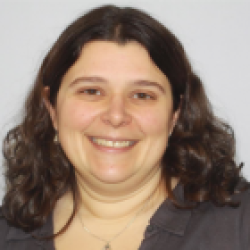
In PBL workshops I facilitate across the country, I generally hear two reasons from participants regarding why kindergarten students can’t possibly do PBL. Ironically, they are opposite reasons. On the one hand, participants argue that kindergarten students are barely learning to “do” school; they can’t read, so they can’t participate in rigorous, inquiry-centered projects. Other participants argue that kindergarten is too rigorous; there is too much to learn, so they can’t possibly spend time on projects that aren’t rigorous enough.
Kindergarten students can do rigorous projects. There is something magical about watching our youngest students engaging in deep critical thinking and discussion, reflecting on their work’s strengths and areas for improvement, and critiquing, revising, and producing high-quality products. As you plan and facilitate your next project for younger students, keep the following four guidelines in mind and see if your projects become more rigorous.
Hold high expectations for every student.
The research on self-fulfilling expectations shouldn’t be news to educators; we’ve known for some time that teachers with high expectations for their students tend to get more high-quality work, and teachers with low expectations for their students tend to get more low quality work, independent of students’ actual abilities or motivation. I see teachers of younger students hesitate to implement critique protocols where students could get cool feedback. Don’t forget Austin’s Butterfly; Ron Berger’s story of a first-grade student who did six drafts of a butterfly drawing until he got it right, with critique help from his peers. It is a sign of respect for our students when we treat their work as important (and actually make their work important), and a piece of that is helping them do excellent work.
Focus on quality of thinking, not quantity.
The amount of paper I see in some kindergarten classrooms is truly astounding to me. Students are churning out worksheets, cut and paste papers, and pattern block designs at a rapid pace. Instead of worrying about practice and the amount of it your students get, focus on the quality of thinking your students are doing. Students can cut and paste a sort of 24 living and non-living things, or they can engage in a class discussion about fire, or clouds, or wind: are they living or non-living? They move, certainly. Does that make them alive? Do they grow? Fire could be seen as growing, as could clouds; they certainly get larger sometimes. A think/pair/share discussion or a student’s thoughts recorded on an iPad can tell you much more about their understanding of living and non-living than a fairly obvious object sort, and it requires your students to use a higher level of critical thinking.
Scaffold students’ journey through an ambiguous process.
I once witnessed a kindergarten project focused on identifying trees around the school at the request of the principal, who had visited the class and told the students that she needed a map identifying every tree around the school building. The teacher immediately turned the design of the map over to the students. They hadn’t studied maps, but the students had all seen maps, and she wanted them to figure out on their own how to create the type of map the principal was looking for. She scaffolded a discussion in which the students brainstormed different ways of creating the map. Eventually, the students chose one boy’s idea: to collect a leaf sample from each tree and glue it to the map to mark the tree’s location. These students might have grown used to having a teacher tell them the way they were going to complete an assignment. Instead, through this teacher’s facilitation skills, they took the first step toward being comfortable in and thinking about an ambiguous process.
Instruct and give real feedback on success skills.
In our PBL 101 workshop, we use a video called “Stray, Stray, Go Away” to give participants practice using one of our rubrics to score presentation skills and give feedback. The video features adorable kindergarten students from the Katherine Smith School in San Jose, California, during a final presentation of a PBL project on their exhibition night. When I ask teachers what feedback they would give the students, they are very quick to give positive feedback. It’s true; these students had a very strong presentation. It’s obvious that they practiced and prepared for the presentation, but that doesn’t mean it was perfect. After some encouragement, I can generally get participants to give some examples of feedback on things the students could improve, even though they really don’t want to do so. Their argument is that these are little kids and they did a great job. My argument is that the way to honor their work, to make it a rigorous process, is to give them real feedback—warm feedback, sure, but also cool feedback. Even young students can and should be expected to improve their work.
There is nothing more empowering to our youngest students than the message that we believe they can complete rigorous PBL projects. Keeping these four guidelines in the forefront of your mind as you plan and facilitate your projects for younger students will help ensure the high level of rigor that all students, regardless of age, deserve.
Resources and further reading:

